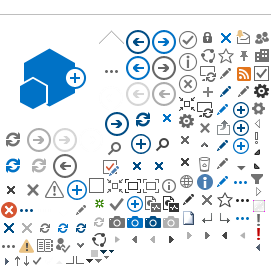Program Overview
The primary objective of the fellowship is to provide the fellow with exposure to and hands on training with the most significant corneal diseases. The diagnosis and medical management of diseases of the lids, conjunctiva, cornea/sclera and anterior ocular segment, as well as recognition and treatment of posterior segment diseases that may affect the anterior segment.
The cornea fellow will have wide surgical exposure to surgeries of the conjunctiva, cornea/sclera, anterior segment, lens, and anterior vitreous, with special emphasis on corneal transplantation and related procedures.
Principles and practice of keratorefractive surgery as well as principles of contact lens fitting and management of complications of contact lens wear are an essential part of our fellowship program.
Goals and Objectives
- Develop skills that allow independent medical and surgical management of cornea and external diseases.
- Use of these skills in order to diagnose and treat disorders relevant to the subspecialty.
- Demonstrate medical knowledge of established and evolving clinical, epidemiological, and social-behavioral sciences, and apply this knowledge to patient care.
- Participate in all activities that help facilitate the development of this medical knowledge including lectures, grand rounds, journal clubs, national meeting presentations, and scholarly activities.
- Provide patient care that is compassionate, appropriate, and effective.
- Develop the ability to formulate appropriate differential diagnoses and learn to make informed decisions about diagnostics and therapeutic interventions based on properly gathered patient information, up-to-date scientific evidence, and clinical judgment.
- Develop the ability to practice culturally competent medicine and use information technology to support patient care decisions.
Clinical Training and Key Rotations
During the fellowship the fellow is expected to have continuous exposure to the following clinical settings with progressive surgical training in the required skills:
Cornea Refractive Surgery Principles and Techniques:
- FY1: Phototherapeutic Keratectomy (PTK), Corneal Cross-Linking (CXL), Arcuate Corneal incision.
- FY2: Photorefractive Keratectomy (PRK), Laser In-situ Keratomileusis (LASIK), Small incision Lenticule Extraction (SMILE), IntraStromal Corneal Ring Segment (ICRS, INTACS).
Corneal, External Diseases and reconstruction surgery:
- FY1: Eye Trauma Repair, Amniotic Membrane Grafting, Surgical Keratectomy, Pterygium Excision + MMC + Conjunctival Autograft, Corneal Biopsy +/- Mass Excision, Conjunctival & Scleral Mass Biopsy + Excision, IntraStromal Injection of Antibiotics.
- FY2: Tectonic Corneal Graft, Penetrating Keratoplasty (PKP), Deep Anterior Lamellar Keratoplasty (DALK), Corneal Epithelial Stem cell Transplant.
- FY3: Descemet Stripping Automated Endothelial Keratoplasty (DSAEK), Descemet Membrane Endothelial Keratoplasty (DMEK), Keratoprosthesis.
Anterior Segment surgery:
- FY1: Phacoemulsification + PCIOL, Refractive Lens Exchange with clear Lens Extraction, Extracapsular Cataract Extraction (ECCE).
- FY2: Phacoemulsification + Toric IOL, Small Incision Cataract Surgery (SICS), Anterior Vitrectomy +/- IOL implant, Pupilloplasty.
- FY3: Phakic IOL ( ICL, Artisan), Scleral Fixation IOL, Secondary IOL Implantation ( Suture less + Yamane).
Contact Information
Program Director:
Dr. Fahad Al Qahtani, M.D.
Associate Program Director(s):
Dr. Adeya Al Harami, MD
Program Coordinator:
Ms. Amal Nasser
Program Email:
NCHEKKALICHINTAVIDA@hamad.qa
Resources
Educational Resources
- HMC medical library provides access to major journals in print and to a much wider variety of journals through internet access including databases such as OVID MD, oxford publications, clinical key, science direct, Thieme publications, Springer publications, nature, Qatar medical directory, access medicine/ surgery/ emergency medicine/physiotherapy/ anesthesiology, pub med, up-to-date, Qatar national library and pro quest medical library. In addition there is access to drug databases: BNF, Micromedex, NIH drug portal, Lexicomp.
- Computers are available to fellows at all wards, all the operating rooms, conference room and in on-call rooms providing free and easy access to the above-mentioned educational resources.
- Wi-Fi (mobile) access also available to provide internet access in all HMC training sites.
Facility Resources
- The inpatient ward includes 14 beds. The Ward resident/fellow presents each case daily during the Ground round to an attending group of 2-3 Consultants and 2-3 Specialists and fellows. This provides an exceptional opportunity to faculty to assess and advise the fellows regarding clinical findings, ordering and evaluating diagnostic testing, consultation with other services, and formulation and monitoring treatment.
- Operating Theater includes three fully equipped Ophthalmic OR’s with operating microscope and other latest ophthalmic surgical devices.
- Refractive surgery suit is located in the Ambulatory Care Center equipped with latest LASIK and femtosecond machines.
- The outpatient clinics are held in the Ambulatory care center. There are 21 fully equipped exam rooms, 5 rooms for optometry, and 10 rooms for ancillary testing. One room is solely dedicated for collagen crosslinking procedures equipped with an accelerated crosslinking device and a microscope as well as tools for minor corneal procedures such as corneal foreign body removals and suture removals. The outpatient areas have a fully functional ophthalmic examination room, and are equipped with all necessary instrumentation for diagnosis and management of cornea, cataract and external diseases with access to all specialized equipment. Such equipment include but not limited to:
a. Corneal tomography
b. Ultrasound corneal pachymetry
c. IOLMaster Zeiss technology
d. Optical coherence tomography (OCT)
- Emergency patients are seen in the Emergency Department of Hamad General where there are three fully equipped Ophthalmology exam room and an ophthalmic technician as well as full access to Laboratory testing and diagnostics and imaging including CT and MRI.
- Well-trained, experienced and qualified faculty with multiple areas of expertise.
